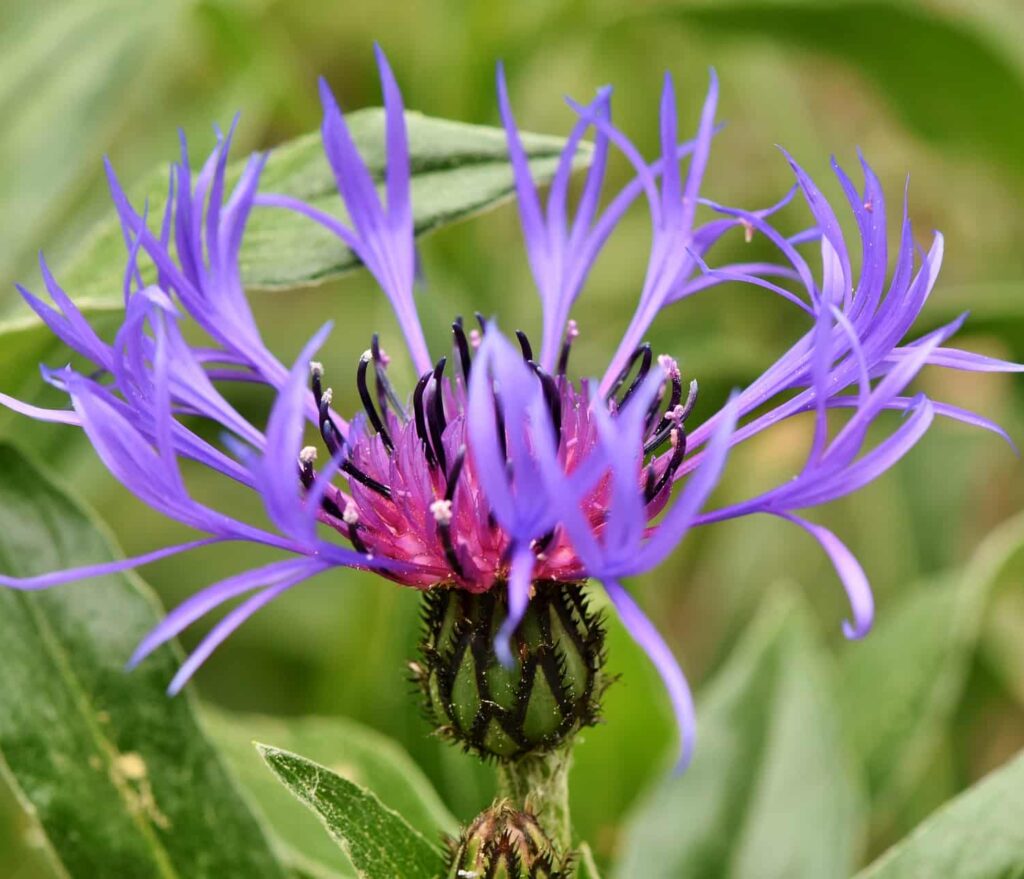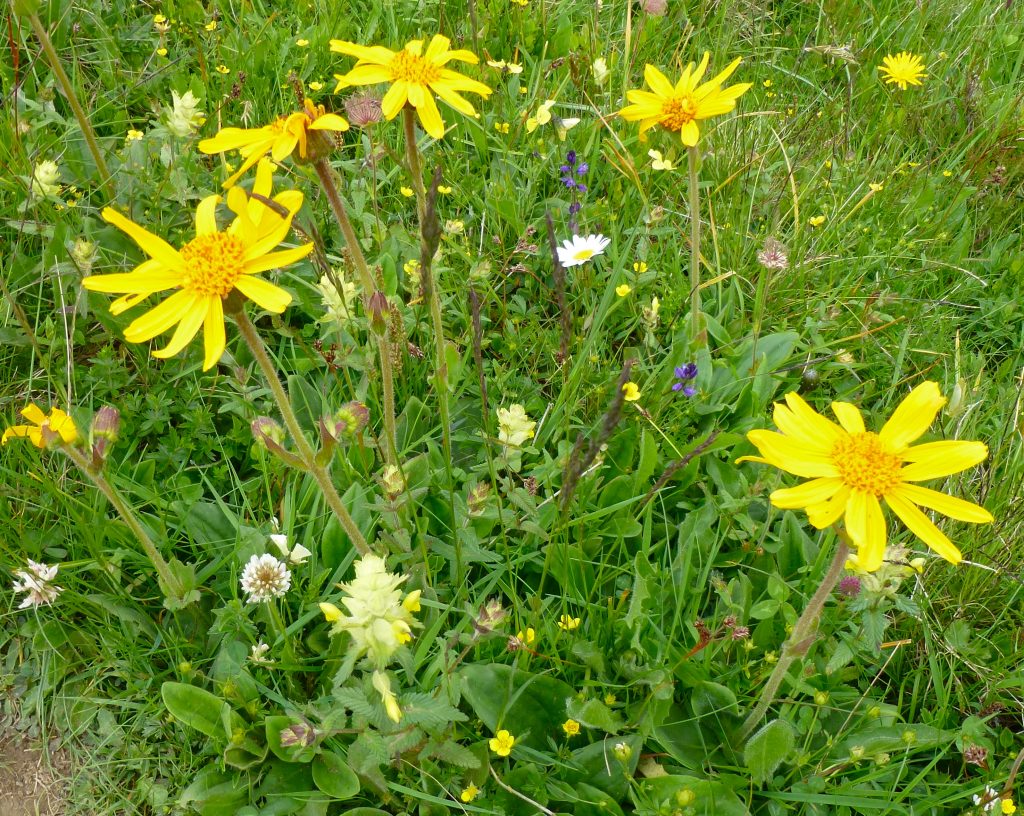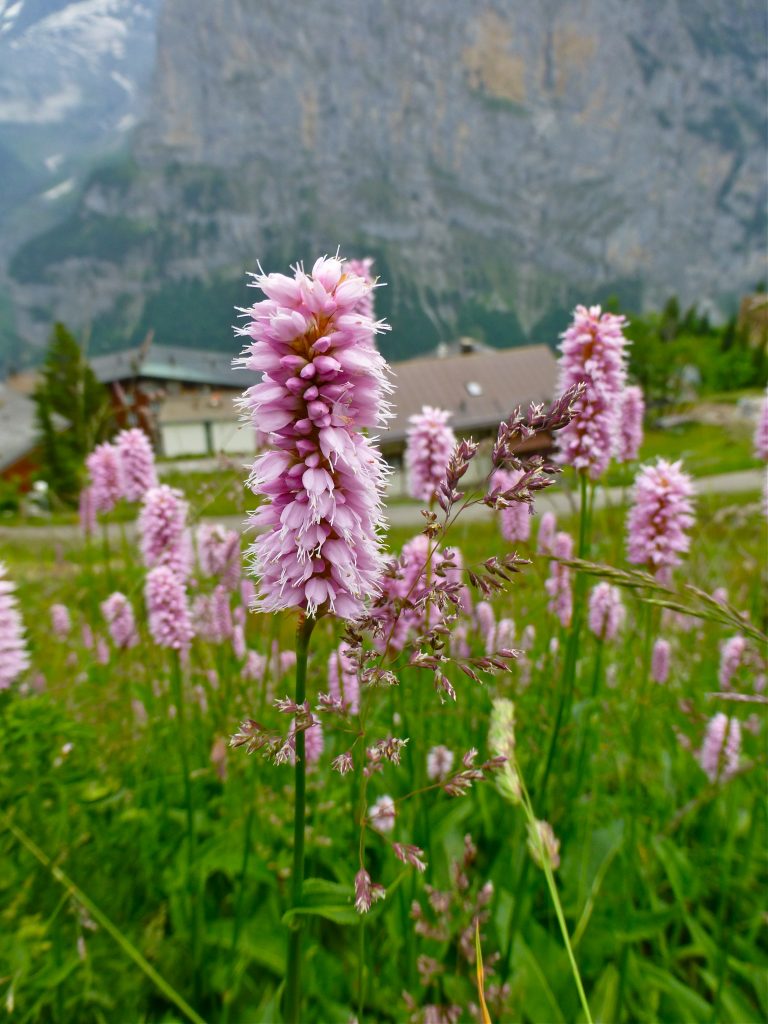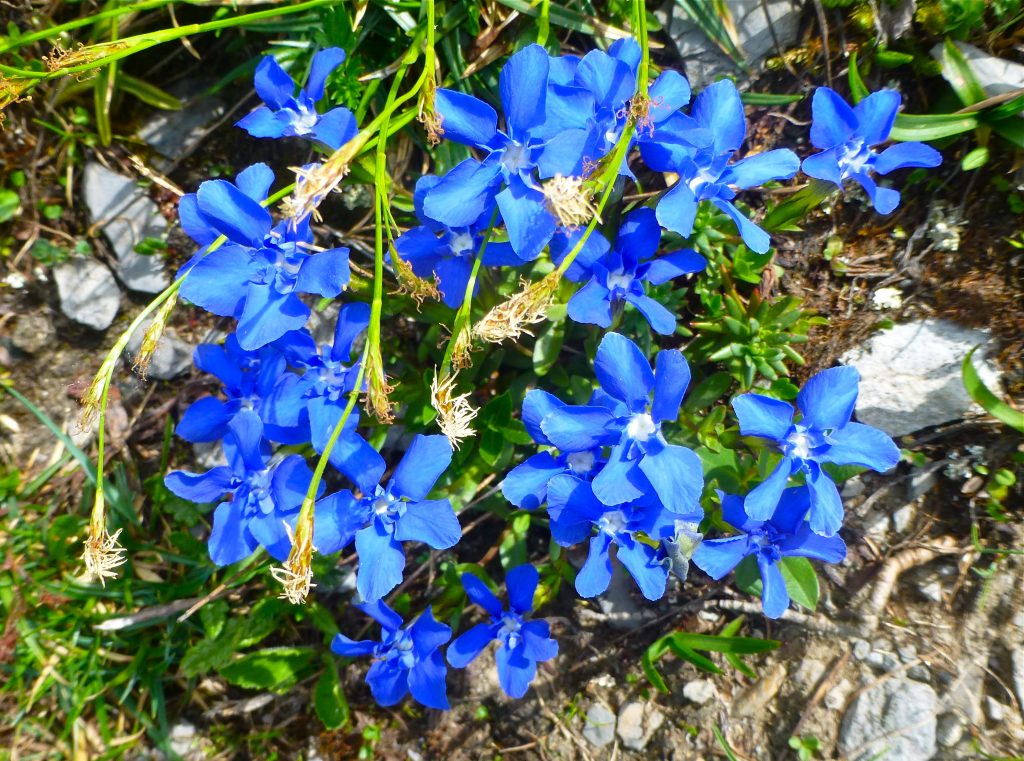The flowers in the Alps are beyond compare. It seems that every few days new varieties pop up. Early June is a great time to visit to see full meadows of color. After that, the cows start to eat them, and farmers start to cut the lower fields for hay. But there are tons of different wildflowers to be found at various elevations all throughout the summer. Here are some of the common ones we see and their names.

Common Bird’s-foot Trefoil: Lotus Corniculatus. This beautiful yellow flower is ubiquitous and is a member of the pea family. Another name for it is Bacon-and-eggs!

These sweet blue flowers always escape me..that’s right, they are Forget-me-nots: Myosotis alpestris. They can be confused with King-of-the-alps which is much rarer.

Perennial Cornflower: Centaurea montana. The juice from the petals of this beautiful flower is a brilliant blue and was used as ink, watercolor, and to dye linen. The color is not permanent so it is no longer used as such. It is a protected plant.

These majestically poised flowers are Arnica: Arnica Montana. It is a member of the daisy family. A commercial preparation of Arnica is used in a cream, gel, lotion, or sublingual tablets to treat bruises, strains, and sprains. Boy has it helped me recover from hard workouts and hikes! This is a protected flower.

This sweet little flower has a funny name, Bladder Campion: Silene Vulgaris. The flowers look like old fashioned bloomers. In the evening they are fragrant and the young shoots may be added to salads.

These hanging purple flowers are the Martigon Lily: Lilium martagon. The bulbs lower on the stalk open first. They are protected.

These tufted flowers are the Common Bistort: Polygonum bistoria. The roots of the plant are double twisted (bistoria in Latin) and are said to resemble snakes. Because of this, Bistort was once thought to be a cure for snakebites. The roots contain starch and are used as a source of flour in Russia and Iceland. In England the red dye extracted from the root was used to tan leather.

We will end this primer with the brilliant blue Spring Gentian: Getiana verna. The blue of these small flowers is almost electric. It is protected.
If you are interested in wildflowers and are coming on a self-guided tour with Alpinehikers, be sure to let you’re tour designer know that is important to you, and they can help steer you to the right time and location.
I hope you enjoyed Part 1 of the Swiss alpine flower primer!! Make sure to check out Part 2!





